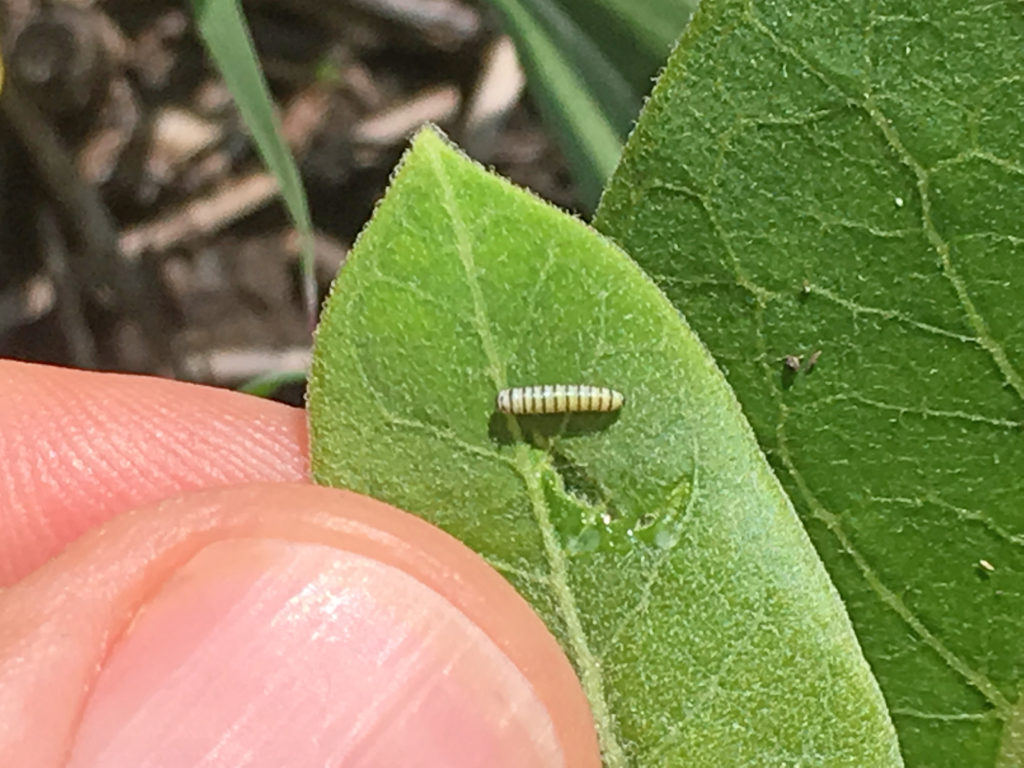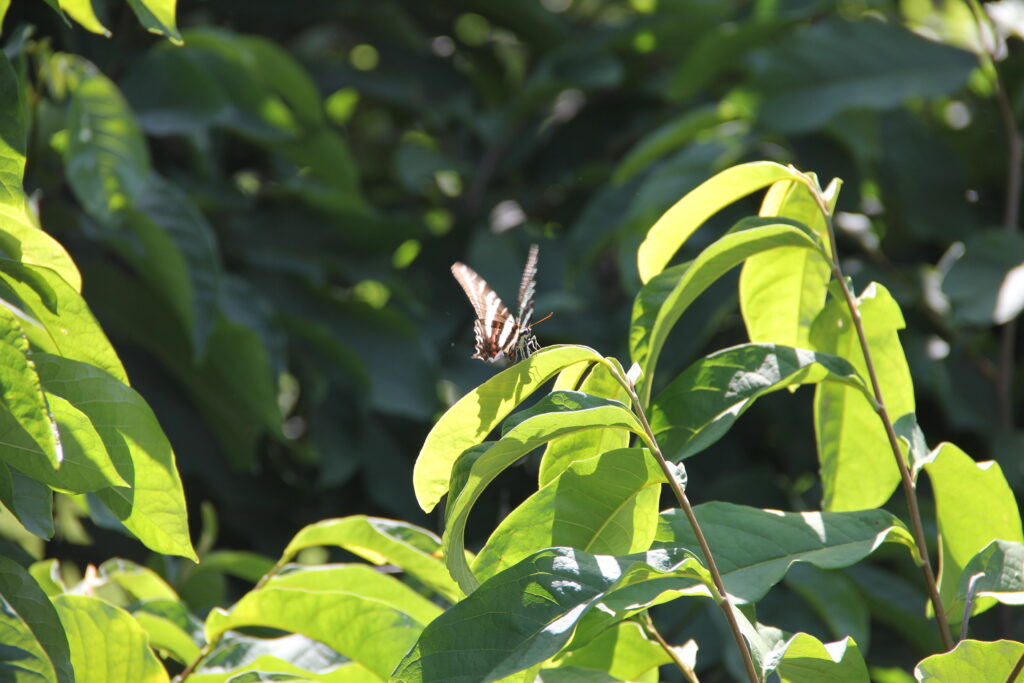We encounter many enthusiastic new gardeners at FloraKansas who have heard about the importance of planting native plants, but don’t yet have the knowledge base needed to establish a successful planting. If you’re dreaming of a flourishing prairie pollinator garden, let me unpack the why behind the what of a few more horticultural terms for you.
Host Plants
Often, the focus for our gardens is on blooms and succession of blooms, more so than host plants. Beautiful gardens in full bloom are what we see in catalogs, magazine and books. It is natural to gravitate toward these flourishing gardens that nectar-seeking butterflies need to sustain themselves. However, host plants (food for butterfly caterpillars) will keep them coming back to your landscape for years to come.
It’s important to plan for the entire life cycle of a pollinator. Butterflies need places to lay their eggs. Think of host plants as the baby nurseries of the garden. Female butterflies will flit and flutter through your garden looking for the right plant to lay their eggs. Some will lay their eggs on stems, or on the underside of leaves, hidden from predators. If you have a variety of host plants, you will attract a variety of butterflies.

Ultimately, the goal of any habitat garden is to provide everything those butterfly species need to complete their life cycle. Food for all stages of their life cycle, protection, and water are needed at different times throughout the year. The tiny larvae (caterpillars) will emerge and begin eating on the host plant. As they eat, they grow until they leave the plant and form a chrysalis. It is a fascinating process that you can watch unfold in your own garden.
Here are a few host plants and the pollinator they attract:
- Wild Lupine – Karner Blue butterfly
- Golden alexander – Black Swallowtail butterfly
- New Jersey Tea – Spring Azure butterfly
- Columbine – Columbine Duskywing
- Smooth Blue Aster – Crescent Butterflies
- Little Bluestem – Leonard’s Skipper
- Prairie Violet – Fritillary Butterflies
- Pearly Everlasting – American Lady
- Milkweeds – Monarchs
- Paw Paw – Zebra Swallowtail butterfly

Resource: Holm, Heather. Pollinators of Native Plants: Attract, Observe, and Identify Pollinators and Beneficial Insects with Native Plants. Pollination Press, 2014.
Sunlight Defined
Knowing how much light you have within your landscape is an important piece to a sound design. By simply watching sun patterns throughout the year, you will be able to determine how much sunlight your garden receives. Industry standards and labeling can then be used to assist in selecting the right plants for your landscape conditions. Here are some terms worth knowing since all plants require sunlight to grow, but differ in the amount and intensity of light needed to prosper.
- Full sun – Plants need at least 6 hours of direct sun daily
- Part sun – Plants thrive with between 3 and 6 hours of direct sun per day
- Part shade – Plants require between 3 and 6 hours of sun per day, but need protection from intense mid-day sun
- Full shade – Plants require less than 3 hours of direct sun per day
Full Sun
Not surprisingly, this type of light describes what most prairie plants need. They enjoy open, bright sunny locations with direct sunlight for most of the day. This could also be morning shade/afternoon sun or vice versa, as long as there is at least 6 hours of continuous sunlight. Most of these plants have deeper root systems or adaptations that help them endure this light intensity for the growing season.
Let experience be your guide when situating plants. Yes, some plants can handle full sun, but need protection for the hot afternoon sun. Or they can handle full sun with consistent moisture. This is the other reason to understand your site, including soil moisture, soil type, root competition and drainage. All these factors directly affect plants too.
Part Sun and Part Shade
These light definitions are quite a bit different than plants for full sun. Plants for part sun and part shade obviously require less light, more importantly, the light intensity is a key factor for their endurance and success. Filtered sun for most of the day or morning sun afternoon shade fit the bill for situating plants. Too much direct sunlight for too long a period will stunt plants needing part sun or part shade.
There is often a fine line between getting too much sun that the plants suffer and getting too little light that the plants don’t bloom. For either group, providing direct morning sun is often the best choice.
Full Shade
Most shade plants require anything from the dappled shade found under deciduous trees, indirect light found on the north side of the house or deeper shade found under evergreens. In our area, growing shade plants can be a challenge because we are trying to grow shade plants in what was once a prairie environment with intense full sun. True shade plants often perish because they get too much sun, too much hot dry wind and/or too little moisture.
To successfully grow shade plants in our area, they need protection and consistent moisture. Any shade gardens must mimic the woodland environment. Loamy soils with leaf litter, consistent moisture – but not too much! – and protection from drying winds. It can be a challenge, but shade gardens can be carefully created with the proper light conditions, too.


